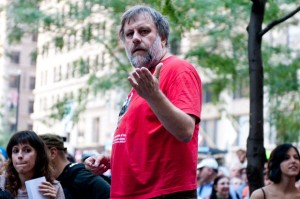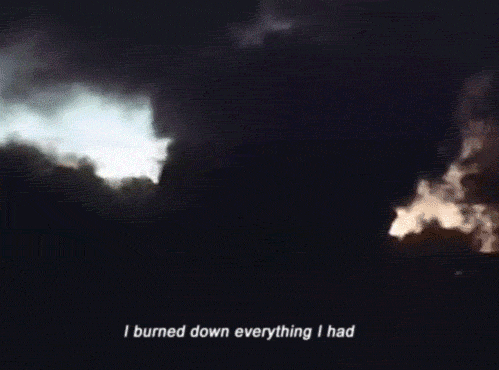A series of talks by Michael Stone about chapter 3 of The Yoga Sutra a text written by mysterious author(s) often named Patanjali in the second century. Notes by MH include reveries and imaginings. Centre of Gravity Fall 2011. www.centreofgravity.org
Concentration
Concentration/mindfulness occurs when your attention connects to a field (of breath, or sound, or…) Instead of a reaction and commitment to whatever story you presently enjoy, you return to the object of meditation.
Pleasure and Truth
After much practice of the 6th limb of yoga: dharana (or concentration) – once you can bring attention back to the breath again and again you find the 7th limb of yoga: dhyana. The flow of attention aligns itself with the object (the breath, the sound…) with less distraction. If you look at a candle you can see that there’s agitation in the flame because of moving air currents. When that flame settles – like a candle in a windless room – this is samadhi, or integration. In samadhi, concentration is settled enough so that distractions do not arise. This occurs for folks with long practices or if you’re on retreat or if you’re lucky. We feel we are being held in concentration. When you finish the end of the exhale other thoughts don’t arise, instead pleasure and contentment arise. This is a fork in the road of practice. How to let go of that experience? When meditation starts feeling peaceful it’s hard not to get caught in the internal pleasure. Insight means being able to see the difference between wanting pleasure and wanting truth.

Steady and Momentary
There are 2 kinds of samadhi:
1. steady concentration
2. momentary concentration (you’re there for a moment and then pulled back)
How can we notice the end of the exhale without making it work out in a certain way? There are actually eight kinds of samadhi but we’re only going to deal with a couple right now. The first level is one pointedness. That’s when you can gather all the attentive energy and settle it into a single field. In previous meditations, by the time you catch your mind it’s already somewhere else. You know you’re concentrated when you’re catching the thoughts as they arise. In Pali this is called bhavana – causing to be developed. It means becoming. Though most people think of meditation as not becoming. But meditation trains your mind to release and redo samskaras. These are psychological, physical, emotional and cultural grooves. They relate to your gender, how much money is in your bank account, how you sit in a chair, your familial relations, who you fall in love with. There are so many ways that sitting still works with our deep grooves. You’re cultivating non-reactivity. And this non-reactivity means you are laying down new grooves. Every moment where there’s nirodha or non-clinging creates new samskaras. You’re beginning to meet your life in a new way. And we do this by staying connected with the breath. The breath is always changing, but attention is still. The field is moving, the attention is still.

40 Objects
There are 40 objects you can work with in samadhi. These include chakras, breath, 32 parts of the body 14 stages of decomposing corpse.
In the first kind of samadhi, integration (oneness) with an object, you don’t get insight. In the second kind of samadhi, momentary samadhi, you do get insight. There can be a fierce seeing, seeing something about the nature of mind, it’s mindology not psychology. It’s experiential insight, not discursive, it’s not a thinking knowledge.
Oh, and there aren’t really two kinds of samadhi. Well, there are and there aren’t. There’s a rhythm, an alternating current, one becomes another.

Inner + Outer Space
As helpful as the ancient teachings are, The Yoga Sutra describes a moment when the private world of the individual appears. Often emphasized is the way concentration leads to inner life, there’s not a lot of conversation about how concentration leads to outer life. This has to do with conditions in India at the time when these texts were laid down.
Occupy Wall Street
We’re about to see Occupy Wall Street expand to 20 cities and as dharma practitioners we’re going to be asked: what do you have to offer? Occupy Wall Street began with a small group of people responding to a call in Adbusters Magazine. It began in Zuccotti Park, formerly “Liberty Plaza Park” in New York City. Participants are protesting against social and economic inequality, corporate greed, and the influence of corporate money and lobbyists on government. Financial markets are supposed to allocate capital and manage risks, but they’ve misallocated capital and increased risk. You can’t socialize losses and privatize gains and expect people to keep sitting around. The banks took risks and lost and everybody paid for them. It’s asymmetric investment where the banking system is preying on the poor.

Not Knowing
The media keeps asking: what are your demands? But there is no leader or ideology to this group and it doesn’t have an expiry date. Patanjali talks about the end of the exhale, the end of a thought, and how that inaugurates the beginning of an inhale, or the beginning of a new thought. It’s hard to bear witness to the end of something without demanding to replace it with something. The occupation is trying to stay patient in a liminal space without articulating demands. For now. Perhaps we can’t think about the end of capitalism, or what our relations with each other would be like if we didn’t have capitalism to massage the spaces. How can we bear witness without fixing your view and knowing what is going to happen next? Walter Benjamin said that a revolution is not like being on a train moving faster and faster but when someone finally pulls the hand brake. Occupy Wall Street is pulling the hand brake.
Slavoj Zizek October 9, 2011
They tell you we are dreamers. The true dreamers are those who think things can go on indefinitely the way they are. We are not dreamers. We are awakening from a dream which is tuning into a nightmare. We are not destroying anything. We are only witnessing how the system is destroying itself. We all know the classic scenes from cartoons. The cart reaches a precipice. But it goes on walking. Ignoring the fact that there is nothing beneath. Only when it looks down and notices it, it falls down. This is what we are doing here. We are telling the guys there on Wall Street – Hey, look down! (cheering).
In April 2011, the Chinese government prohibited on TV and films and in novels all stories that contain alternate reality or time travel. This is a good sign for China. It means that people still dream about alternatives, so you have to prohibit this dream. Here we don’t think of prohibition. Because the ruling system has even suppressed our capacity to dream. Look at the movies that we see all the time. It’s easy to imagine the end of the world. An asteroid destroying all life and so on. But you cannot imagine the end of capitalism. So what are we doing here? Let me tell you a wonderful old joke from communist times.
A guy was sent from East Germany to work in Siberia. He knew his mail would be read by censors. So he told his friends: Let’s establish a code. If the letter you get from me is written in blue ink ,it is true what I said. If it is written in red ink, it is false. After a month his friends get a first letter. Everything is in blue. It says, this letter: everything is wonderful here. Stores are full of good food. Movie theaters show good films from the West. Apartments are large and luxurious. The only thing you cannot buy is red ink.
Naomi Klein Oct. 6, 2011
…Yesterday, one of the speakers at the labor rally said: “We found each other.” That sentiment captures the beauty of what is being created here. A wide-open space (as well as an idea so big it can’t be contained by any space) for all the people who want a better world to find each other. We are so grateful.
If there is one thing I know, it is that the 1 percent loves a crisis. When people are panicked and desperate and no one seems to know what to do, that is the ideal time to push through their wish list of pro-corporate policies: privatizing education and social security, slashing public services, getting rid of the last constraints on corporate power. Amidst the economic crisis, this is happening the world over.
And there is only one thing that can block this tactic, and fortunately, it’s a very big thing: the 99 percent. And that 99 percent is taking to the streets from Madison to Madrid to say “No. We will not pay for your crisis.”
That slogan began in Italy in 2008. It ricocheted to Greece and France and Ireland and finally it has made its way to the square mile where the crisis began.
“Why are they protesting?” ask the baffled pundits on TV. Meanwhile, the rest of the world asks: “What took you so long?” “We’ve been wondering when you were going to show up.” And most of all: “Welcome.”
Many people have drawn parallels between Occupy Wall Street and the so-called anti-globalization protests that came to world attention in Seattle in 1999. That was the last time a global, youth-led, decentralized movement took direct aim at corporate power. And I am proud to have been part of what we called “the movement of movements.”

But there are important differences too. For instance, we chose summits as our targets: the World Trade Organization, the International Monetary Fund, the G8. Summits are transient by their nature, they only last a week. That made us transient too. We’d appear, grab world headlines, then disappear. And in the frenzy of hyper patriotism and militarism that followed the 9/11 attacks, it was easy to sweep us away completely, at least in North America.
Occupy Wall Street, on the other hand, has chosen a fixed target. And you have put no end date on your presence here. This is wise. Only when you stay put can you grow roots. This is crucial. It is a fact of the information age that too many movements spring up like beautiful flowers but quickly die off. It’s because they don’t have roots. And they don’t have long term plans for how they are going to sustain themselves. So when storms come, they get washed away.
Being horizontal and deeply democratic is wonderful. But these principles are compatible with the hard work of building structures and institutions that are sturdy enough to weather the storms ahead. I have great faith that this will happen.
This is how we live. We have all the freedoms we want. But what we are missing is red ink. The language to articulate our non-freedom. The way we are taught to speak about freedom war and terrorism and so on falsifies freedom. And this is what you are doing here: You are giving all of us red ink…
http://www.naomiklein.org/articles/2011/10/occupy-wall-street-most-important-thing-world-now
Thomas L. Friedman Oct. 11, 2011 (NY Times Op-Ed)
…Paul Gilding, the Australian environmentalist and author of the book “The Great Disruption,” argues that these demonstrations are a sign that the current growth-obsessed capitalist system is reaching its financial and ecological limits. “I look at the world as an integrated system, so I don’t see these protests, or the debt crisis, or inequality, or the economy, or the climate going weird, in isolation — I see our system in the painful process of breaking down,” which is what he means by the Great Disruption, said Gilding. “Our system of economic growth, of ineffective democracy, of overloading planet earth — our system — is eating itself alive. Occupy Wall Street is like the kid in the fairy story saying what everyone knows but is afraid to say: the emperor has no clothes. The system is broken. Think about the promise of global market capitalism. If we let the system work, if we let the rich get richer, if we let corporations focus on profit, if we let pollution go unpriced and unchecked, then we will all be better off. It may not be equally distributed, but the poor will get less poor, those who work hard will get jobs, those who study hard will get better jobs and we’ll have enough wealth to fix the environment.

“What we now have — most extremely in the U.S. but pretty much everywhere — is the mother of all broken promises,” Gilding adds. “Yes, the rich are getting richer and the corporations are making profits — with their executives richly rewarded. But, meanwhile, the people are getting worse off — drowning in housing debt and/or tuition debt — many who worked hard are unemployed; many who studied hard are unable to get good work; the environment is getting more and more damaged; and people are realizing their kids will be even worse off than they are. This particular round of protests may build or may not, but what will not go away is the broad coalition of those to whom the system lied and who have now woken up. It’s not just the environmentalists, or the poor, or the unemployed. It’s most people, including the highly educated middle class, who are feeling the results of a system that saw all the growth of the last three decades go to the top 1 percent.”


